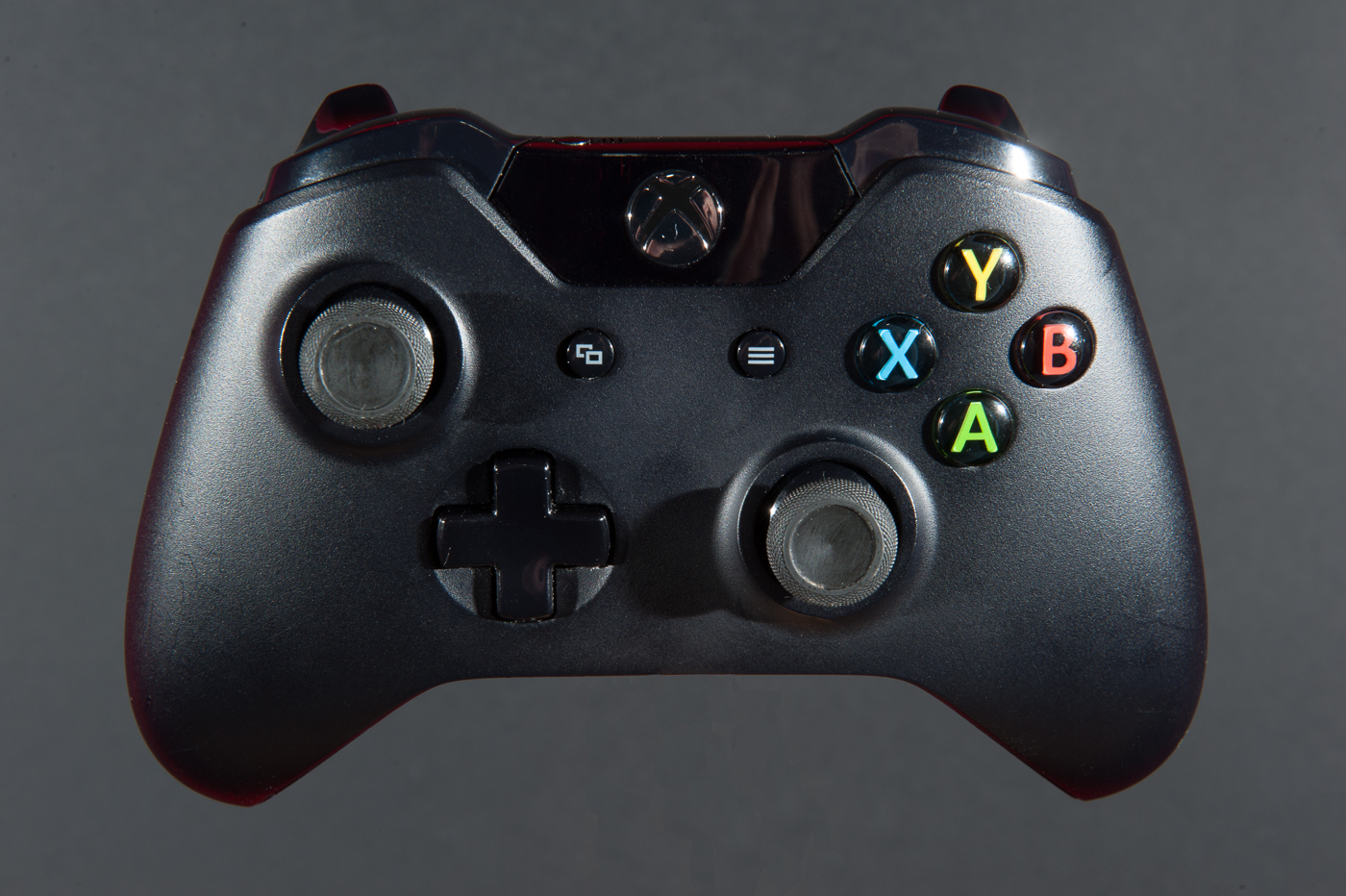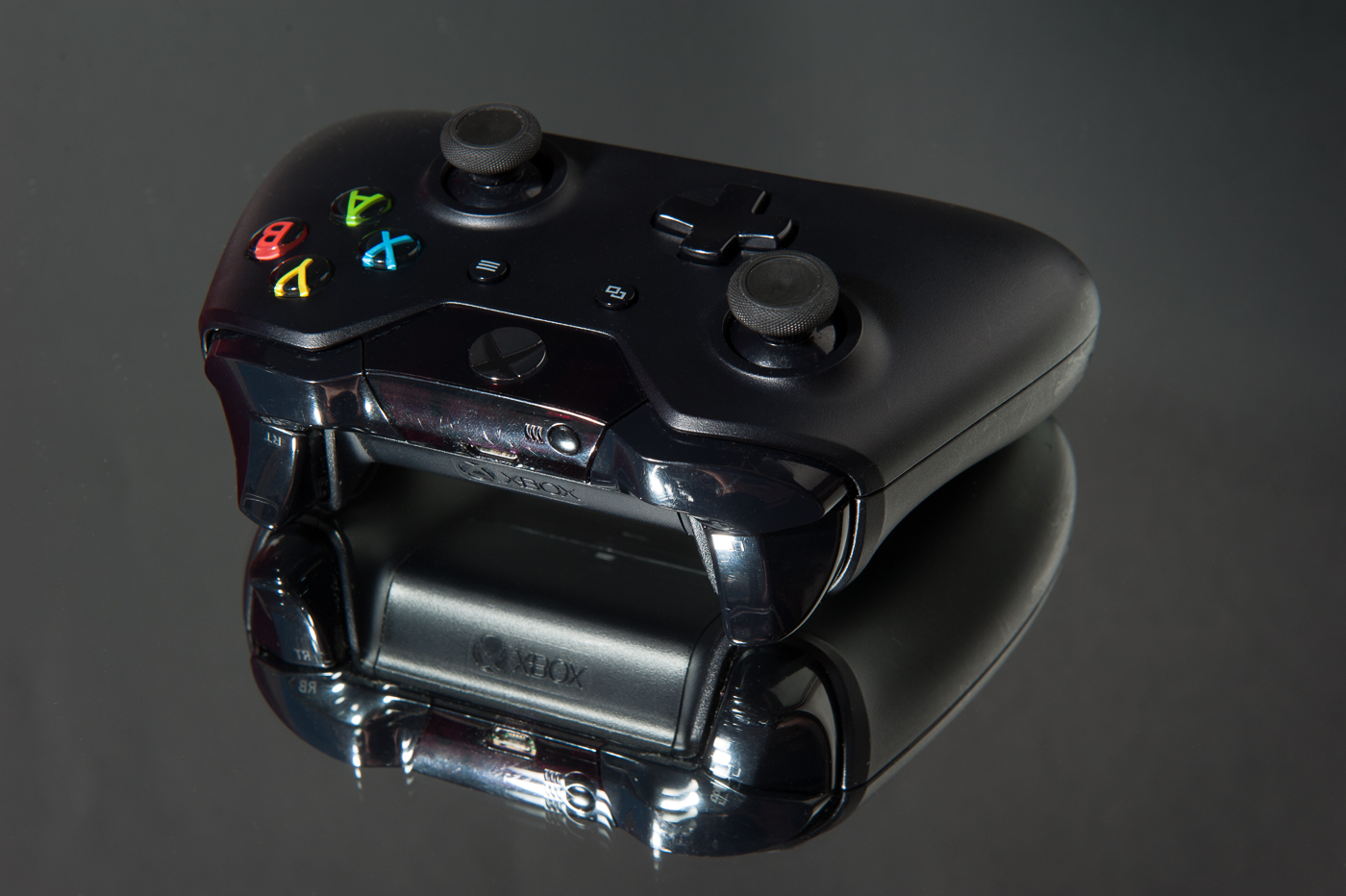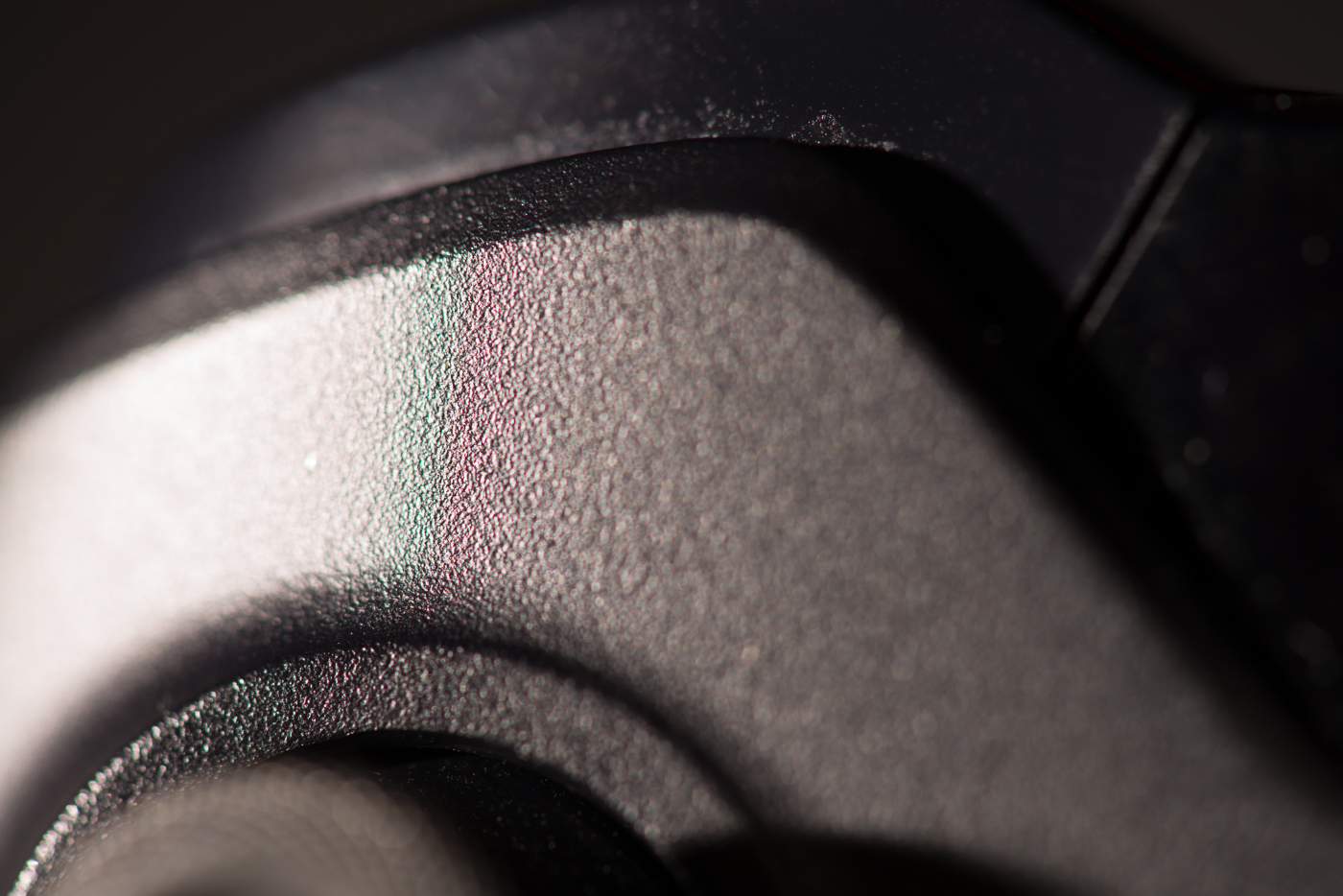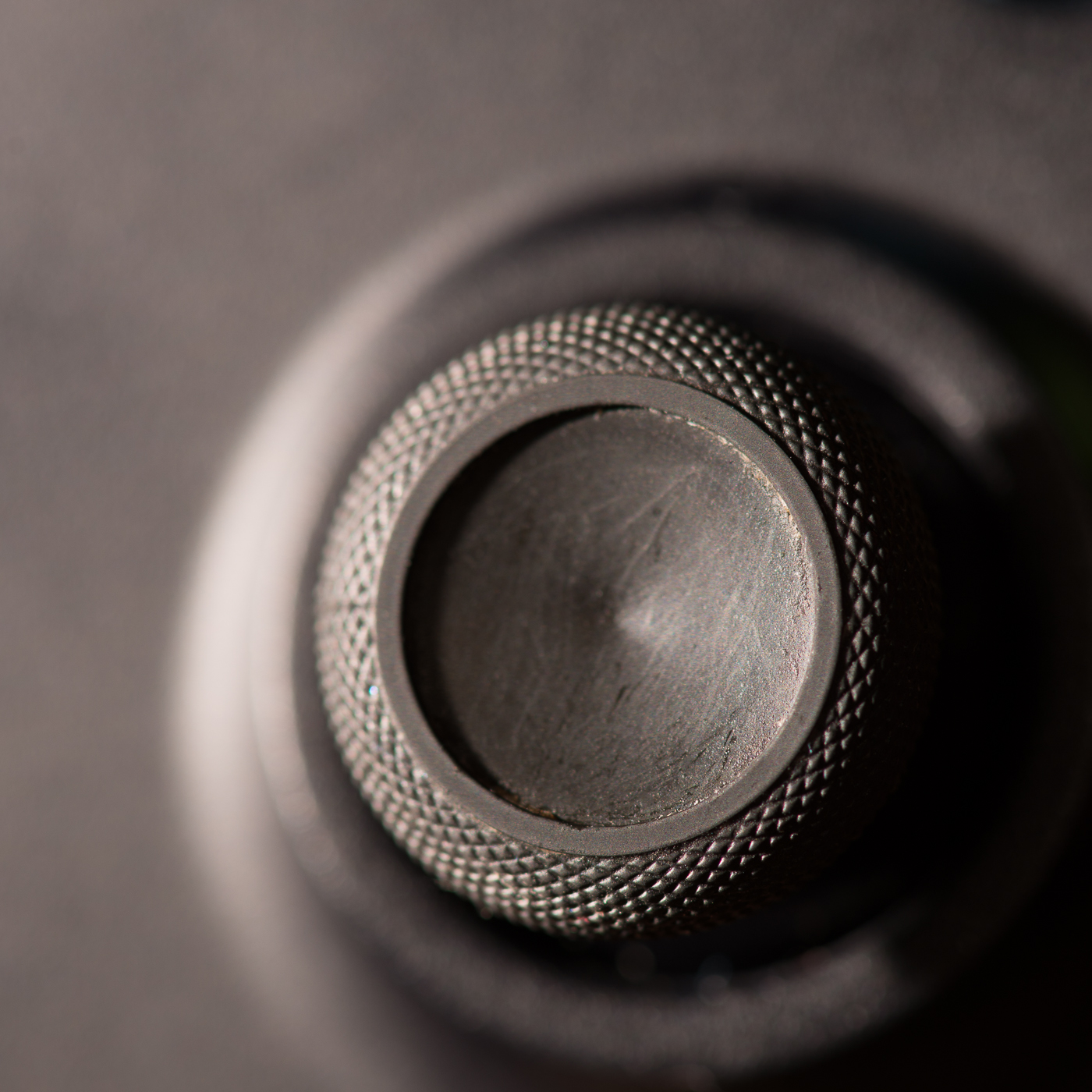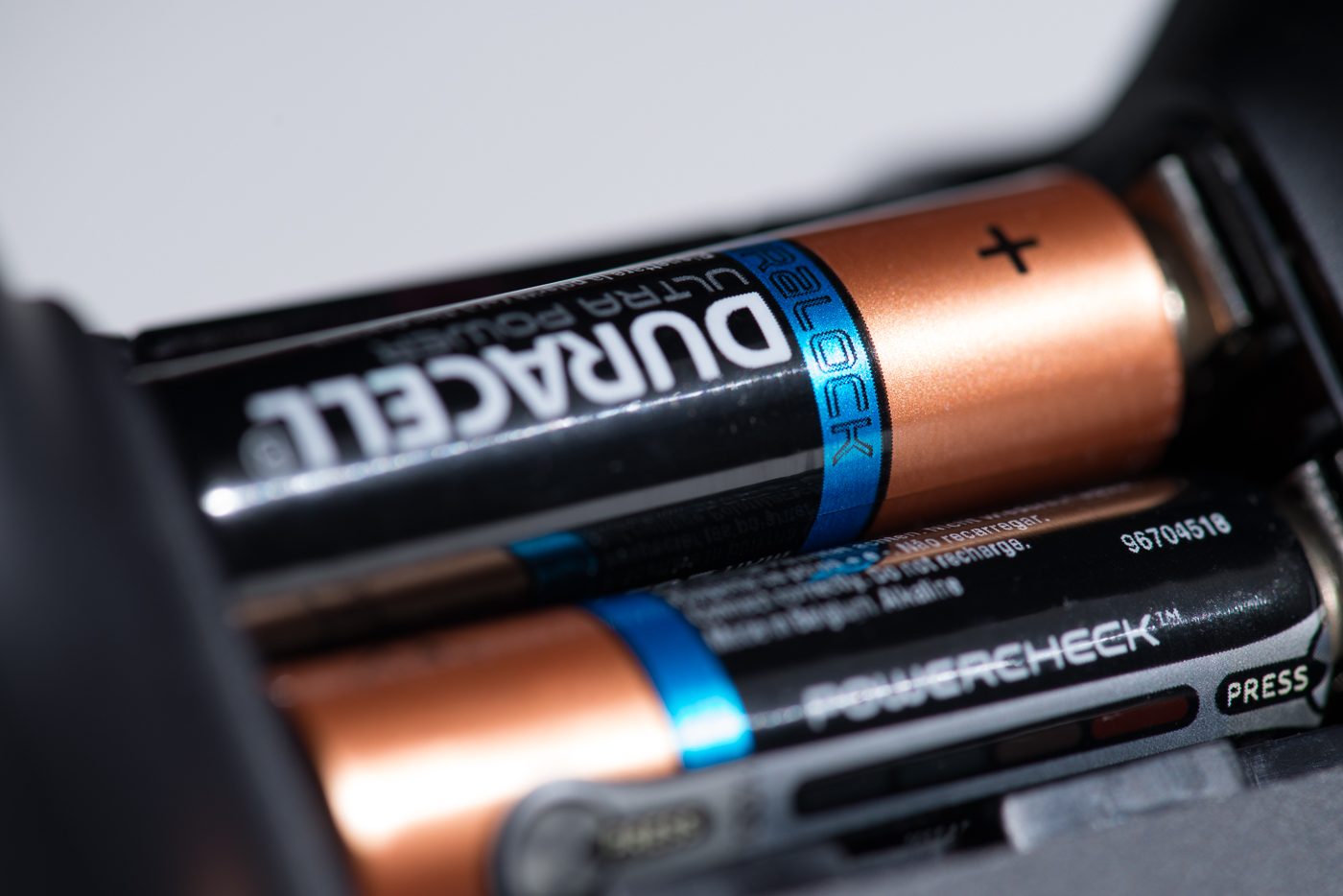Introduction
For this assignment I was to photograph one object using the different lighting techniques I have been studying. The aim is to bring out particular physical properties of the object using lighting. The qualities to be shown are :-
- Shape
- Form
- Texture
- Colour
The first challenge was selecting an object that had all 4 elements, was small enough to move around and light in a small studio setup and could look some what different in each shot.
The second challenge was elevating this from a purely technical exercise of applying lighting techniques to something with artistic merit. My tutor suggested looking at the still life work by Edward Western. His selection of subjects and lighting produced images of objects which take on an almost human appearance, for instance, peppers which look like lovers entwined or a cabbage leaf which could be mistaken for cascading hair. I failed this challenge miserably, perhaps the only shot where the subject (game controller) is almost unrecognisable is the first texture shot
"As photographers, we are primarily concerned with the brightness, color, and contrast of the light." (Hunter, Fuqua and Biver, 2011 : P17). I eliminated any variation of the colour of the light by using the same light source for all of the images. The brightness also had an effect as I used a sufficiently bright light source to ensure that the ambient light had no effect on the final images.
Shape
The shape (or outline) of an object is dictated by the edges. A cylinder may look completely circular in shape if only the round end is visible. Silhouette is an effective pproach to emphasise the edges of an object and is achieved by placing the light source directly behind the image, as illustrated in the first image below. I wanted to emphasise the controllers triggers as they reminded me of little demonic horns so I tilted the controller forward slightly causing the light to spill over and give the bright "Halo" effect.
Another way of showing the shape of an object is to shoot against a plain background thus removing any distractions and focusing entirely on the subject. I have used this in the second photo below. To ensure no shadows on the background I lit the controller from either side perpendicular to the cameras lens. This has the effect of making the controller almost float off the background and the high contrast lighting clearly defines the shape. To me it resembles a butterfly in a case pinned to a backboard in a museum.
Form
"A shape is ‘converted’ to a solid by highlight and shading. A cast shadow anchors the solid 0bject on a plane and further enhances the illusion of the third dimension in the two dimensions" (Präkel, 2007 : P157).
Form is all about adding depth to the photograph and this is done with highlight and shadow. Giving the subject depth gives the photo a sense of realism. When discussing form Präkel (2007) tells us that an emotional response is triggered in the viewer. Muscle and touch memory are activated when looking at a photograph of the highlighted curves of sports car for instance.
In the first of the photos below the modeling light is set at 45 degrees to the subject, giving the illusion of light falling from the sun and highlights the curved grips of the controller whilst simultaneously anchoring the object to the plane and giving a sense of depth to the picture.
In the second "form" photo I decided to experiment with reflection instead of shadow to anchor the controller to the surface. The effect is spoiled by multiple reflections from the surface of the glass and the metal coating of the mirror as well as refraction of the light within the glass but is somewhat successful on the right hand side of the photo where the controller's grip is reflected without these distractions.
Texture
A photo with texture is one in which we can almost feel the object in our fingertips while looking at it. The best way to enhance the texture of an object is to use as small a light source as possible and positioning it so that the light "rakes" across the surface of the object. Reducing the size of the light source increases the contrast and creates the harsh mini shadows and highlights which enhance the objects texture in the photographs as can be seen below.
Colour
Hunter, Fuqua and Biver, (2011) tell us that a high contrast light source is one where all of its rays strike and object from the same direction whereas a diffuse light source is one where the rays strike the object in many directions. A diffuse light source has the effect of diluting or washing out the colour of an object however a high contrast light source intensifies the colour. The images below were lit with a single undiffused flash unit.
Reflection
I believe I have met the technical aspects of the assignment, as for the artistic side I find myself somewhat at a loss. I still struggle with imbuing my work with meaning.

